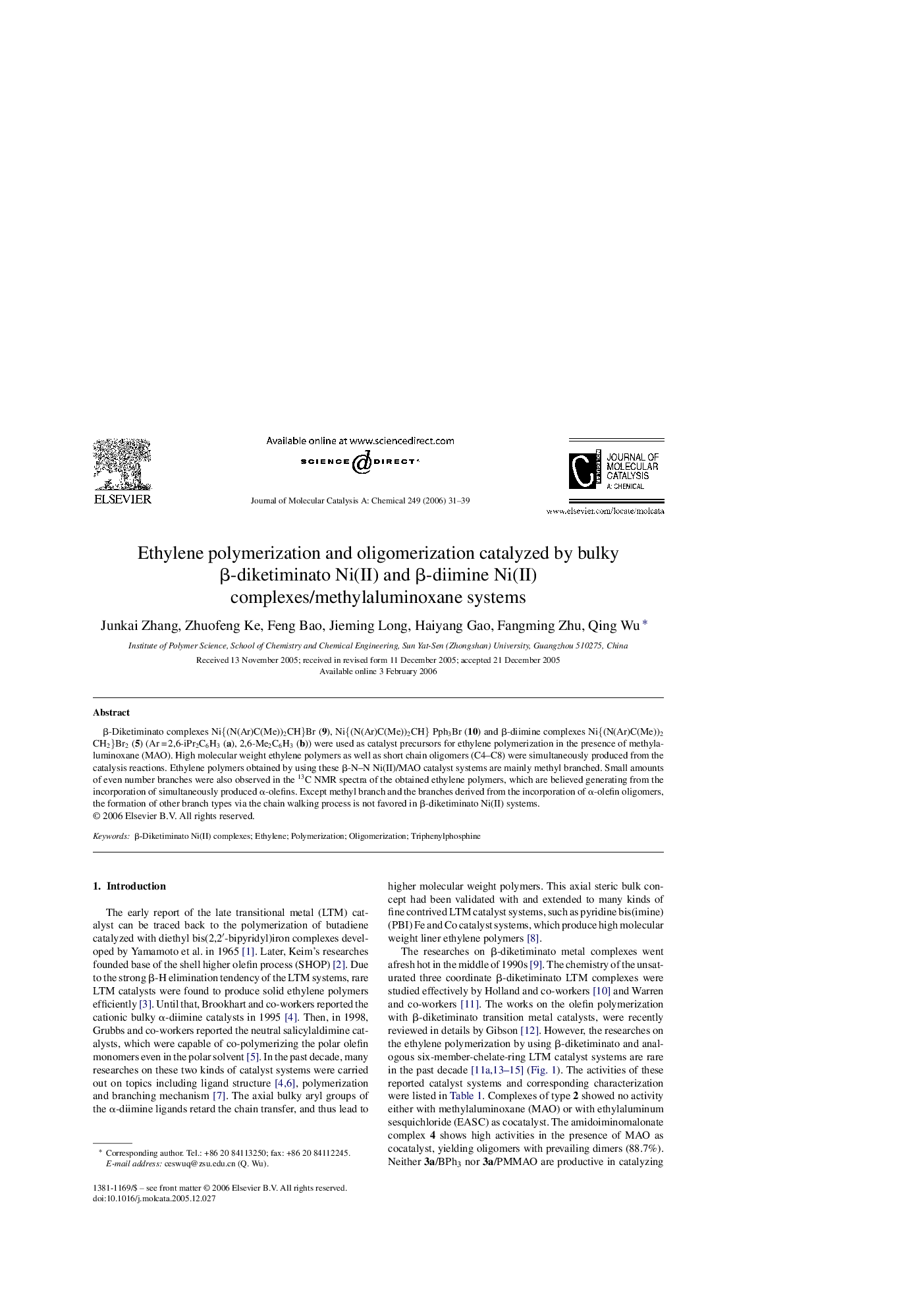| Article ID | Journal | Published Year | Pages | File Type |
|---|---|---|---|---|
| 69006 | Journal of Molecular Catalysis A: Chemical | 2006 | 9 Pages |
β-Diketiminato complexes Ni{(N(Ar)C(Me))2CH}Br (9), Ni{(N(Ar)C(Me))2CH} Pph3Br (10) and β-diimine complexes Ni{(N(Ar)C(Me))2CH2}Br2 (5) (Ar = 2,6-iPr2C6H3 (a), 2,6-Me2C6H3 (b)) were used as catalyst precursors for ethylene polymerization in the presence of methylaluminoxane (MAO). High molecular weight ethylene polymers as well as short chain oligomers (C4–C8) were simultaneously produced from the catalysis reactions. Ethylene polymers obtained by using these β-N–N Ni(II)/MAO catalyst systems are mainly methyl branched. Small amounts of even number branches were also observed in the 13C NMR spectra of the obtained ethylene polymers, which are believed generating from the incorporation of simultaneously produced α-olefins. Except methyl branch and the branches derived from the incorporation of α-olefin oligomers, the formation of other branch types via the chain walking process is not favored in β-diketiminato Ni(II) systems.
Graphical abstractβ-Diketiminato Ni(II) complexes/MAO systems catalyzed ethylene polymerization are characterized by simultaneous oligomerization. The obtained ethylene polymers are basically methyl-branched, even if the polymerizations were carried out at higher temperature. Results show that the in-chain migration of Ni(II) center were restrained in β-diketiminato Ni(II)/MAO system. Figure optionsDownload full-size imageDownload as PowerPoint slide
